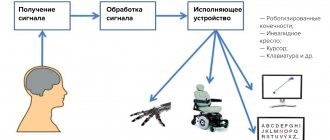Author
Korobkova Irina Grigorievna
Head of the Department of Post-Stress Conditions and Sleep Disorders
Chief Network Specialist
Candidate of Medical Sciences
Psychotherapist
Publication date: 04/07/2021
until October 31
We're giving away RUR 1,000 for all services per visit in October More details All promotions
Regular exercise isn't just good for your body. They can help us cope with stressful situations.
In the shadow of stress
Stress can't be avoided, but it can be controlled
As they say, stress cannot be avoided, but it can be controlled.
There are many factors that contribute to the development of stress. A stressful background is created by health problems, financial difficulties, work; Even our normal reactions to everyday life can lead to increased anxiety and “feed” stress.
Statistical surveys show that almost everyone has to deal with stress. According to ROMIR, 95% of our country’s residents experience stress in one way or another. VTsIOM data differs slightly: according to them, only 9% of Russians are not familiar with stress. And 8% of the population experience stress constantly.
How many people are stressed at one time? According to the results of one of the studies (data from the Kemerovo region for 2013 were used), the prevalence of stress was 22.6%. At the same time, stress was registered more often in women than in men (28.1% versus 11.7%).
We cannot completely avoid problems. Avoiding problems is not the best tactic. But by developing a habit of regular exercise, you can add an effective stress relief tool to your arsenal.
Belly breathing
Sit in a comfortable position or lie on the floor. Place one hand on your stomach, the other on your chest, and take a deep breath through your nose. Make sure that the shoulders are relaxed, the chest does not expand, and the diaphragm is working - the muscular partition that separates the chest cavity from the abdominal cavity. When you inhale, it contracts and falls, causing the stomach to protrude forward, and when you exhale, it rises and pushes air out of the lungs.
As you inhale, inflate your stomach, and as you exhale, pull it towards your spine. Try to take 6-10 slow breaths per minute. With such breathing, the body is better saturated with oxygen. Respiratory pattern of diaphragmatic breathing and pilates breathing in COPD subjects. .
When to do it
Before an exam, an interview, and in any stressful situation when you need to quickly calm down. If you want to feel the long-term effect, practice this breathing for 10 minutes every day. For example, immediately after waking up or in the evening before bed. This will have a positive effect on both the cardiovascular The physiological effects of slow breathing in the healthy human. and digestive Diaphragmatic Breathing for GI Patients. systems, and on the general mental The Effect of Diaphragmatic Breathing on Attention, Negative Affect and Stress in Healthy Adults. health.
How does exercise help relieve stress?
Aerobic exercise (moderate-intensity exercise that uses oxygen for energy) increases your heart rate, causing the body to release endorphins, chemicals that act as a natural pain reliever and improve your mood. After exercise, we experience a natural emotional uplift.
Endorphins not only relieve pain and improve your mood, they also help us sleep better. The combination of these effects can reduce the effects of stress. By exercising regularly, we get the opportunity to enjoy these benefits more often.
Regular exercise (as opposed to one-time exercise) also has a cumulative effect, which manifests itself in improving the level of physical fitness, increasing endurance and losing weight. These are all positive changes, and the fact that we are changing for the better increases our self-esteem. And with the growth of physical strength, emotional strength also increases, and mental well-being improves.
One more thing. During times of stress, it is human nature to concentrate on the problem. Under the weight of worries, it is difficult to think about anything else. And we overwhelm ourselves, feeling that this oppression is increasing. But having inserted physical exercise into our daily schedule, we will be forced to switch. And even a short-term complete redirection of attention to something else can bring vital relief and relieve stress. In addition, coming to the gym can help you find a new circle of communication and additional emotional support.
Alternate breathing through the nostrils
Sit in a position that is comfortable for you, keeping your back straight. With your right thumb, close your right nostril and take a deep breath through your left. At the peak of your inhalation, close your left nostril with your ring finger and exhale through your right. Try to fill and empty your lungs to the limit.
Do five of these cycles, then switch nostrils. That is, inhale through the right and exhale through the left. After this, take five inhalations and exhalations through both nostrils. Don't rush or strain, breathe relaxed.
When to do it
When you need to quickly concentrate, cheer up and recharge your batteries. Yogis also believe that this practice develops a state of harmony in a person.
What exercises are we talking about?
Jogging will give you positive emotions
Jogging will give you positive emotions
A 20-minute walk in the park or a visit to a Pilates studio can help. Going to the gym or going for a long run can also help. Each type of exercise has its own benefits, and different exercises will suit different people.
You may find that your tension is relieved by breathing in fresh air and choose breathing exercises or focus on the soothing rhythm of repetitive muscle movement. Just as stress is unique to each person, so are the ways we cope with it.
Equal breathing (samavritti)
Sit in a comfortable position, keeping your back straight. Start inhaling, silently counting to four, then take a short pause. After this, exhale, also counting to four. Breathe through your nose all the time. If you want to make the practice more challenging, try counting to six or eight. Make sure that all three components (inhalation, pause, exhalation) are the same length.
When to do it
Anywhere, anytime. This technique calms the nervous system and reduces stress. Try practicing it before you go to bed. Especially if you are one of those people who find it difficult to get rid of thoughts about work and problems in the evening. Practice will replace counting sheep and set you up for sleep.
Complex 2. Muscle relaxation
The progressive muscle relaxation technique was developed by the American doctor E. Jacobson in the 1920s. It is based on a simple physiological fact: after tension of any muscle, a period of automatic relaxation begins. Taking this into account, a technique was developed according to which, in order to achieve deep relaxation of the body, you first need to strongly tense your muscles for 10-15 seconds, and then concentrate on the feeling of relaxation that arises in them for 15-20 seconds.
Exercises:
- Start by focusing on your breathing for a few minutes. Breathe slowly and calmly, think about something pleasant. After this, you can begin muscle exercises, working on different muscle groups.
- Hands.
Squeeze your hand as tightly and tightly as possible. You should feel tension in your hand and forearm. Relax your hand as you exhale, concentrating on the feeling of relief that arises. Repeat the same for the other hand. If you are right-handed, you should start with your right hand, if you are left-handed, start with your left. - Neck.
Tilt your head back, slowly turn it from side to side, then relax. Pull your shoulder joints high towards your ears and in this position tilt your chin towards your chest. - Face.
Raise your eyebrows as high as possible, open your mouth wide (as if you are pretending to be very surprised). Close your eyes tightly, frown and wrinkle your nose. Clench your jaw tightly and move the corners of your mouth back. - Breast.
Take a deep breath and hold it for a few seconds, then relax and return to normal breathing. - Back and stomach.
Tighten your abdominal muscles, squeeze your shoulder blades together and arch your back. - Legs.
Tighten the front and back muscles of your thighs, keeping your knee in a tense, bent position. Pull your foot towards you as much as possible and straighten your toes. Extend your ankle joint and flex your toes.
Do 3-4 repetitions of the complex. Each time you rest a newly tense muscle, notice how good it feels and how relaxed you feel. It helps many people cope with stress and anxiety.
Progressive relaxation
Relaxing breathing is used not only as an independent element of calming gymnastics. There is something called progressive relaxation. It involves the gradual relaxation of all muscles, even those that are not involved in breathing. It is performed as follows: the hand is clenched into a fist, gradually unclenched until complete relaxation. Then the other hand. Next, attention turns to the legs. When all the muscles are relaxed, the person will feel great relief.
Ultimately, regular exercise will provide peace and tranquility for a long period of time. This can be done on an ongoing basis, daily, or as needed.
Breathing exercises for sleep
Many people have a problem such as insomnia. The inability to fall asleep interferes with normal life, since a person does not get enough sleep and feels tired. There is a special lesson to calm the nervous system and fall asleep quickly.
Before going to bed, wear warm and comfortable clothes and lie on the bed in a ventilated room. Take a deep breath into your belly. Hold the air in your lungs for 4 - 7 seconds. In this case, inhalation is carried out through the nose. Next, you should exhale through your mouth, so strongly but slowly that there is a feeling of emptiness and vacuum in the lungs. Repeat several times.
Calming breathing can be used both immediately before bedtime and some time before bedtime. If you make gymnastics for calm and relaxation an evening ritual, then insomnia will leave a person sooner.
Breathing exercises not only help you fall asleep faster, but also help you sleep more deeply. They are good for calming the nervous system. Another trick for deeper sleep. Lie down on the bed and close your eyes. Imagine how solar energy is inhaled along with the air, passes through the entire spine and leaves the body along with the negative, through the feet. You need to inhale slowly through your nose. In this case, it is advisable to keep your shoulders motionless and breathe through your stomach.
The so-called diaphragmatic breathing to calm the nerves will help you relax, relieve stress after a hard day at work and fall asleep faster.
Breathing 4‑7‑8
Find a comfortable position, sitting or lying down, and close your eyes if desired. Press the tip of your tongue to the roof of your mouth, open your mouth slightly and exhale completely. Close your mouth and inhale through your nose, counting to four. Then count to seven, holding your breath the entire time. After this, exhale slowly with a whistle, counting to eight. Repeat the 4-7-8 breathing pattern several times until you feel calm.
When to do it
This technique is a good alternative to equal breathing. Practice it before bed to relax and fall asleep faster. According to the author of the technique, Andrew Weil, the technique will allow you to feel connected to the body, as well as distract from everyday thoughts that prevent you from falling asleep.
Ways to quickly relieve tension
It often happens that stress overtakes you by surprise. Then your health worsens, but you must continue to work and move at the same rhythm. We’ll talk about how to calm down and put your nervous system in order within a few minutes.
Here are some tips from psychologists on how to quickly calm down:
- Self-massage of your fingers helps relieve stress. This can be done on the eve of a public speech, an important meeting, or an exam. This method is simple: you need to press hard on the pads of your fingers one by one. This activates the brain and helps take your mind off stress.
- Deep breathing is a great way to quickly calm down, but it must be done skillfully. With proper calming breathing, only the stomach moves, the chest remains motionless. Five minutes is enough, while inhaling, the stomach moves forward, then a second pause. Then a long exhalation, then a short pause again.
- Aromatherapy helps to calm down. A few drops of lavender oil are added to the lamp and inhaled slowly. It's better to close your eyes.
- You can call a friend or loved one. This will help you calm down.
- Some people find reading to relieve stress, especially if the text makes them smile, such as funny stories. It is useful to write them out in advance and carry them with you.
If your anxiety level has increased, drawing and writing poetry can help. It is impossible to be nervous and creative at the same time.
Calm, just calm!
Increased physical and mental activity, especially in a stressful situation, often causes the appearance of a persistent focus of excitation in the central nervous system. And if a person, in addition, is naturally endowed with anxious and suspicious character traits, then do not go to a neurologist - he has increased nervous excitability.
It is impossible to completely eliminate stress and overexertion from our lives. But it is quite possible to harden your body so that it can calmly withstand any disasters. To bring the nervous system into a stable state, follow simple rules.
1st rule. Get enough sleep . The main symptom that the nervous system has become agitated is insomnia. Accordingly, in order to prevent loosening of the nerves, you need to follow a sleep schedule: go to bed and get up at approximately the same time, and spend at least 7–8 hours in bed. However, these figures are quite arbitrary, since for some people, in order to feel cheerful and rested the next morning, 6 hours of sleep is enough, while for others, they need to spend at least 9 hours in bed. To fall asleep easier and more soundly, you should not go to bed soon after a heavy dinner, or immediately after doing active work (no matter physical or mental). It’s good to give your brain time to prepare for sleep and relax a little. A warm bath with aromatic oils or herbal infusions, light entertaining reading in bed at night is what you need. But it is better to postpone computer games to an earlier time. Hawthorn flowers, valerian, calendula, peppermint, oregano, motherwort, stinging nettle leaves, etc. are suitable for soothing baths.
2nd rule. Avoid noise . Many of us get so used to having the TV on that we hardly notice it. But sometimes aggressive information flowing from screens places an additional burden on the nervous system. Turn on the “box” only to watch programs that really interest you, and the rest of the time let music play at home. Better - classic. Recordings of nature sounds are also suitable. By the way, such audio design is more useful than even complete silence. This was found out by Australian scientists who conducted a study with hundreds of student volunteers on the eve of the exam. Experience showed that those guys who practiced in silence had faster pulse and breathing rates and higher blood pressure than those who listened to classical music. So Mozart can help you!
3rd rule. Spend more time outdoors . Our brain, although it weighs no more than 2% of our body weight, absorbs 18% of the oxygen the body receives. This means that long walks in the park or in the forest are vital for everyone who is forced to exercise their brains a lot and fruitfully. And also for those who are experiencing a difficult psychological situation at home or at work. Too lazy to walk alone - get yourself a four-legged friend.
4th rule. Use medicinal plants . Calendula decoction will help make your nerves stronger than ropes and eliminate insomnia due to increased nervous excitability - 1 tbsp. spoon of flowers per glass of boiling water, leave for an hour. Drink half a glass of warm infusion before bed. Motherwort is no less effective: pour 15 g of herb with a glass of boiling water. Leave for 20 minutes. Drink 1 tbsp. spoon 3-5 times a day.
St. John's wort also has antidepressant properties. The course of treatment with tea from this plant is 4–6 weeks. 2 tbsp. spoons of dry crushed herb should be poured into a glass of cold water, covered, heated in a water bath to a boil, boil for 3 minutes, set aside, leave for 30 minutes, strain and drink half a glass 3-4 times a day.
Well, and finally, a recipe for the lazy: you need to take a pharmacy tincture of hawthorn and valerian fruits, mix in equal proportions. Take twenty drops diluted in half a glass of water before bed.
5th rule. Change your diet . Nerves will become stronger if you enrich your diet with B vitamins and nicotinic acid, which are especially necessary for the proper functioning of neurons. B vitamins help relieve anxiety, relieve fatigue and improve memory, composure and attentiveness, increase learning ability, and prevent stress. The best source of this vitamin is legumes, especially soybeans. By the way, soy is also rich in lecithin, which is beneficial for the normal functioning of nerves and the heart. There is a lot of lecithin in the germs of various grains. Calcium will greatly help the nerves, which promotes the transmission of impulses through the nervous system.
A lack of calcium results in increased anxiety and irritability. Calcium enters the body with milk, cottage cheese, cheese and kefir; from plants it can be obtained in greens, celery, beets and almonds. Another element useful for the nervous system is iodine. Berries, cauliflower, buckwheat, sea fish, and algae are rich in it.
6th rule. Get some exercise . Daily physical exercise not only develops muscles, strengthens ligaments and the skeletal system, but also disciplines, which means it helps you become more balanced and calm. And, in addition, when muscles work, the body releases hormones of happiness - endorphins. This natural stress reliever, which is secreted by the brain, has a beneficial effect on the state of the autonomic nervous system. So let's march!
7th rule. Look at life philosophically . Learn to be reasonable and accept failures and mistakes as a natural part of life, do not go to extremes, do not despair. To have strong and healthy nerves, try to think positively.
Reviews and comments
You can express your opinion about the article, relaxation exercises, as well as share your own knowledge on the topic and experience, using the comment form.
We also recommend reading:
- Storytelling
- Stress and burnout: a large practical digest
- Is it hard to be a yogi?
- How to manage anger?
- Methods of mental self-regulation: save yourself
- Muscle relaxation: relaxation techniques
- To breathe or not to breathe?
- Stress Diary
- 10 Popular Exercises to Relieve Stress
- How to learn to relax: effective relaxation techniques
- Anger management: a selection of useful materials
Key words:1Psychoregulation
Guided Visualization
This method is based on relaxation and calming the nervous system. The technology is quite new and is currently widely used in psychiatry. The technique is being introduced to treat both psychological problems and emotional disorders.
Visualization is very powerful when combined with some breathing techniques. For example, for psychological correction, psychiatrists use this method quite widely, and its results are confirmed by scientific research.
You can visualize your desires and goals. For personal growth, this method allows you to expand your capabilities and boundaries.
It has an impact not only on calming the nervous system, but also on the overall development and harmony of the individual.











